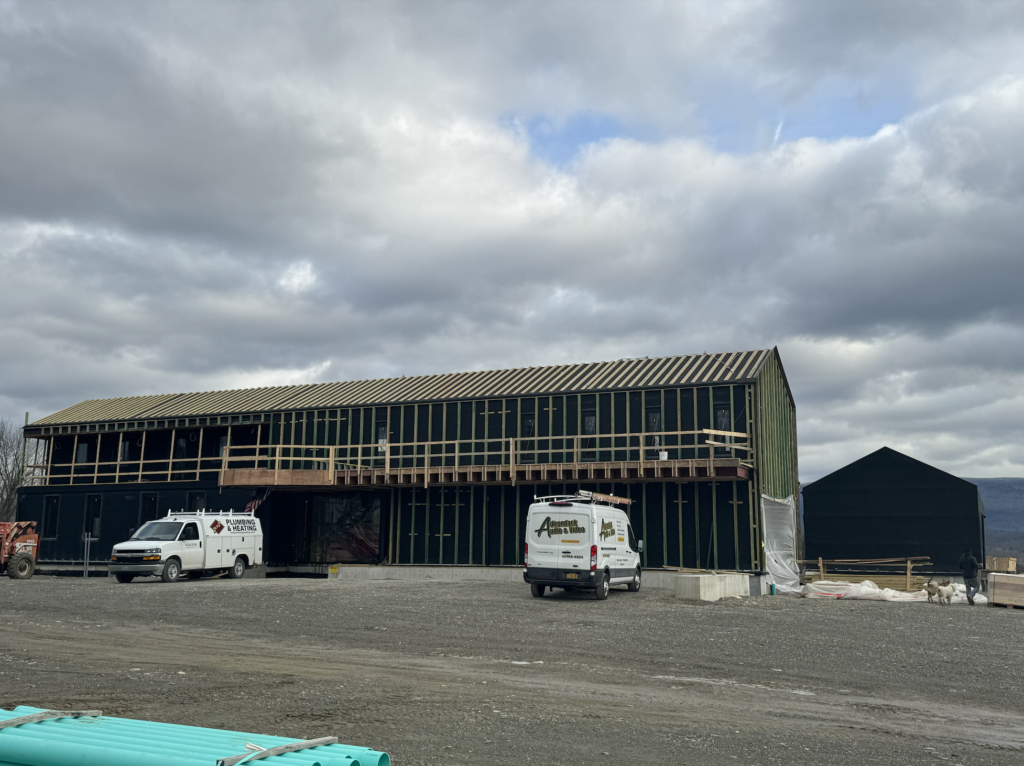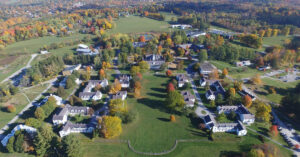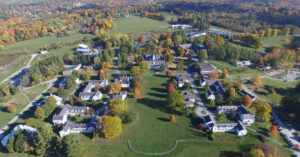
Sometime in 2021, Bennington College’s Board Chair Nicholas Stephens quietly purchased 10 acres of land from the school on the same rural road in Shaftsbury where the President’s mansion is located. He paid $76,790 for the plot, according to financial disclosures, and the purchase agreement between Stephens and the school stipulates that Stephens would spend a minimum of $1,000,000 building a home on the property. The agreement also states that the property will eventually revert back to the college, but there is no specific time frame.
According to biographical information available online, Nicholas Stephens graduated from Bennington in 1977 with a degree in Literature and went on to attend Columbia Business School, where he received an MBA. Stephens went on to become an investment manager and a partner at a large investment management company, Edgewood Management. The Bennington College website says this about Stephens’s history as a Trustee: “Nick has been on the board of Bennington since 2015, serving as Chairman of the Investment Committee, Vice-Chairman and now Board Chairman.”
The real estate deal was done discreetly, with no public recognition or discussion of the sale until the college’s I.R.S. 990 form for the fiscal year ending in June of 2021 was released. The 10 acre plot of land was “appraised by an independent third party,” the disclosure tells us, and the sale was “approved by the executive committee,” meaning the governing committee of the Board of Trustees.
It seems unusual that Bennington College would sell 10 acres of land so close to campus when there is an ongoing housing struggle for students and faculty. Due to increasing incoming class sizes, juniors were informed in Spring of 2023 that they would no longer have single dorm rooms and would need to live with roommates. Just this fall it was announced that many seniors now will face the same fate and have to keep roommates in their final year. In April of last year, the College announced plans to convert some on-campus housing for faculty into new student housing–creating an uproar across campus that only receded when the administration changed course.
Anyone in on-campus housing at Bennington has experienced an anxiety-provoking experience when applying for housing each term. There is always commotion and uncertainty around the availability of rooms, and accommodations are increasingly scarce. Students who live off campus in the apartments at Paran Creek were recently displaced after a fire, and many still haven’t found permanent housing. It’s a striking decision for the college to allow the sale of “unimproved farmland” to the Board Chair instead of holding onto it for a future expansion of housing. If new dorms on the site are not feasible due to town approval or other reasons, there are many other facilities the college currently lacks: an improved gymnasium, a pool facility, new buildings tailored to specific academic concentrations. Or even agriculture: couldn’t the college use 10 acres of farmland to grow more of its own food for dining services or to help address food insecurity for area families?
Ideas for expansion like these may seem far-fetched. It’s well known that Bennington doesn’t have the endowment or flush pockets of other liberal arts colleges. Bennington has a population of 800 students and an endowment of $52.9 million. In comparison, Williams College, a 30-minute drive from Bennington, has a student population of 2,000 and a $4.2 billion endowment. Bennington College, in the same fiscal year as the land sale, reported bringing in $83,242,782 in revenue, and claimed net assets of $104,182,430. Selling this acreage to a board member for $76,790 is a relatively small transaction, but it seems like a blow to the future of the college. Why is the college releasing a plot of land that could be used to build new housing and academic facilities? Once Stephens’ home is completed, the school would have two President’s mansions right next to each other. That is, after Stephens decides to relinquish the property back to the college.

Construction is well underway for the Board Chair’s new mansion. On recent visits to the building site by the Lens, we observed that two separate large black structures have been nearly completed, and a work crew is present every weekday. The beginning of two stories have been etched out in the primary structure, and the second, smaller building appears to be a guest house with an additional bedroom in the making. The main property looks like it could fit at least four bedrooms easily. A large trailer, construction trucks, and tractors remain parked on the lot, and an American flag hangs conspicuously on one structure. The building style is a modern farmhouse with large glass windows. The all-black sleek structure stands out on a road full of more traditional New England houses. There are piles of tile and steel on the ground surrounding the house that will be used to cover the walls and roof. This style looks like it would blend in more in Malibu, California or on an HGTV show.
The architecture and building company designing the house, Birdseye in Richmond, Vermont, have a portfolio of large-scale modern houses in Vermont showcased on their website that are styled unconventionally and stand out, including an all-black mansion with murals on the roof. Certainly, Stephens is fulfilling his end of the bargain with the school, delivering at least a million-dollar home, and from the looks of it, he’s likely putting in more. Neighbors in Shaftsbury are reportedly angry about the house’s design, calling the style “disruptive” and an “eyesore,” while others complain that the enormous structure completely blocks off views of the woods and mountains from homes that have been there for generations.

This all begs the question: What’s in it for the school? What will Bennington do with a second and newer president’s house when the property is finally donated back? Selling land to the Board Chair–during a pandemic, no less–seems like a potential conflict of interest and calls into question the relationship between the college and its Board of Trustees.
The Lens reached out to Nicholas Stephens by email to request an interview but we did not hear back.
Contributions by Lens staff writers Finbar Labelle and Toulmin Jahncke





Be First to Comment